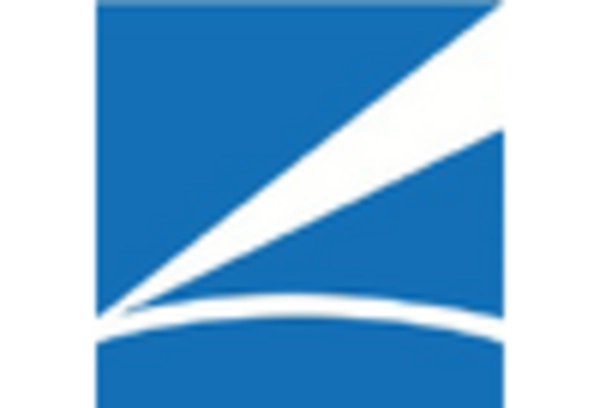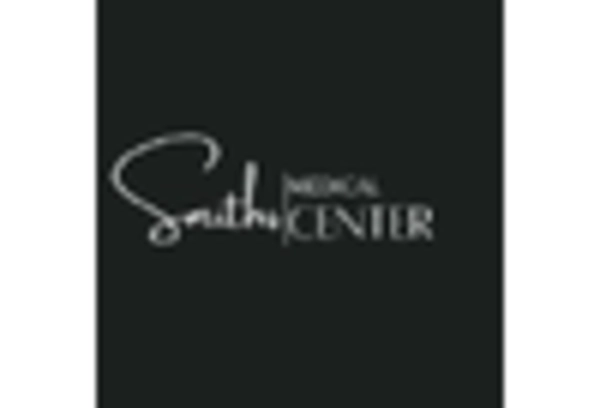Regulatory Support and Standardization
Regulatory support and standardization in the medical device sector are anticipated to positively impact the Pulse Oximeter Systems Devices Market. Regulatory bodies are increasingly establishing guidelines that ensure the safety and efficacy of medical devices, including pulse oximeters. This regulatory framework not only enhances consumer confidence but also encourages manufacturers to innovate and improve their products. Recent initiatives aimed at streamlining the approval process for new medical technologies suggest a more favorable environment for market entry. As manufacturers comply with these regulations, the quality and reliability of pulse oximeters are likely to improve, which could lead to increased adoption in both clinical and home settings. The emphasis on standardization may also facilitate international trade, allowing for a broader distribution of pulse oximeter systems.
Growing Awareness of Preventive Healthcare
The heightened awareness surrounding preventive healthcare is playing a crucial role in shaping the Pulse Oximeter Systems Devices Market. As individuals become more conscious of their health and the importance of regular monitoring, the demand for pulse oximeters is expected to rise. Educational campaigns and public health initiatives are increasingly promoting the benefits of early detection of health issues, particularly in relation to oxygen saturation levels. This awareness is likely to drive consumer interest in acquiring pulse oximeters for personal use, thereby expanding the market. Furthermore, healthcare providers are advocating for routine monitoring as part of comprehensive health assessments, which may further bolster the adoption of these devices. The intersection of consumer awareness and healthcare recommendations could create a robust market environment for pulse oximeters.
Rising Prevalence of Respiratory Disorders
The increasing incidence of respiratory disorders, such as chronic obstructive pulmonary disease (COPD) and asthma, appears to be a primary driver for the Pulse Oximeter Systems Devices Market. According to recent health statistics, respiratory diseases account for a substantial portion of global morbidity and mortality. This trend necessitates the use of pulse oximeters for continuous monitoring of oxygen saturation levels, thereby enhancing patient management. The demand for these devices is likely to rise as healthcare providers emphasize early detection and intervention strategies. Furthermore, the integration of pulse oximeters into home healthcare settings is expected to expand, as patients seek to monitor their conditions more effectively. This shift could potentially lead to a more proactive approach in managing respiratory health, thereby propelling the market forward.
Technological Advancements in Medical Devices
Technological innovations in medical devices are significantly influencing the Pulse Oximeter Systems Devices Market. The advent of advanced sensors, wireless connectivity, and integration with mobile health applications suggests a shift towards more user-friendly and efficient monitoring solutions. Recent data indicates that the market for wearable health technology, including pulse oximeters, is projected to grow at a compound annual growth rate (CAGR) of over 20% in the coming years. These advancements not only enhance the accuracy and reliability of readings but also facilitate real-time data sharing with healthcare professionals. As a result, patients can receive timely interventions, which may improve health outcomes. The ongoing research and development in this sector indicate a promising future for pulse oximeter technology, potentially transforming patient care paradigms.
Increasing Demand for Home Healthcare Solutions
The growing preference for home healthcare solutions is emerging as a significant driver for the Pulse Oximeter Systems Devices Market. As healthcare systems worldwide adapt to the rising costs of hospital care, there is a noticeable shift towards at-home monitoring and management of chronic conditions. Recent surveys indicate that a considerable percentage of patients prefer to manage their health from home, which includes the use of pulse oximeters for monitoring oxygen levels. This trend is likely to be further fueled by the aging population, which often requires continuous health monitoring. Consequently, manufacturers are focusing on developing portable and user-friendly pulse oximeters that cater to this demographic. The expansion of telehealth services also complements this trend, as remote monitoring becomes increasingly feasible and desirable.

















Leave a Comment